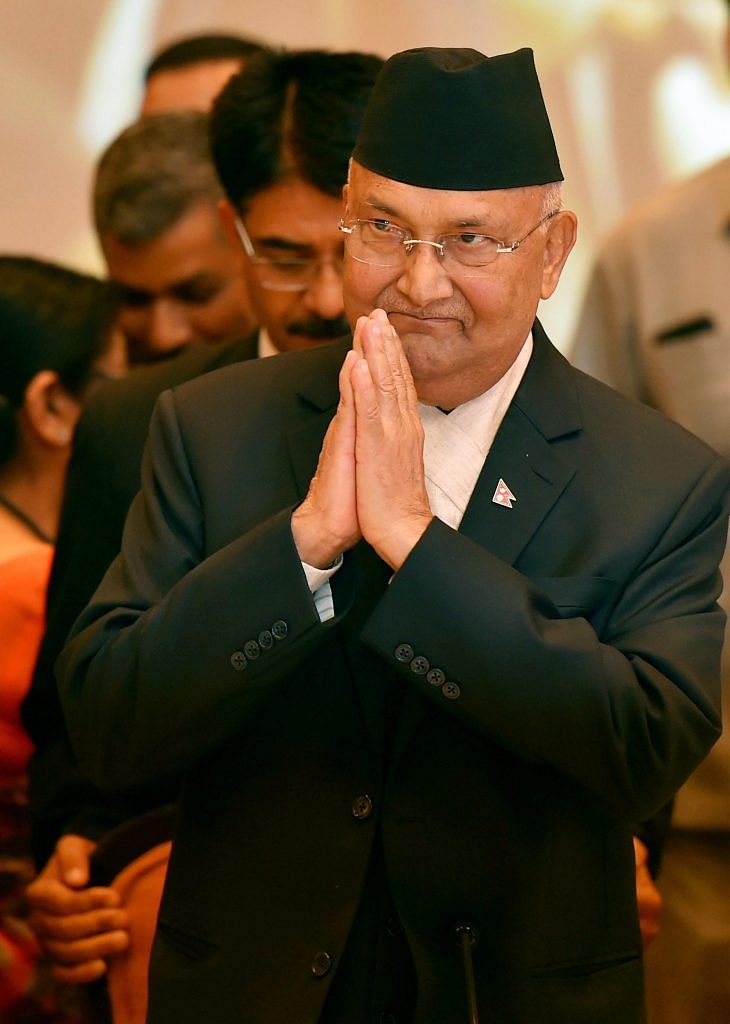Intelligence cooperation, not border identity cards, must be the solution to improve the special relationship between India and Nepal.
An eminent persons group (EPG) set up by the prime ministers of India and Nepal two years ago has agreed to overhaul the 1950 Treaty of Peace and Friendship, which means that the end is nigh for the “special relationship” between the two neighbours.
If the report is accepted, Nepal will be allowed to buy arms and ammunition from a third country (read: China) without having it routed through India, as stated in Clause 5 of the 1950 Treaty.
Second, the “equal treatment” clause that has governed the relationship, in terms of buying property or engaging in trade and commerce, will be abolished. Nepalis working in India – there are an estimated seven lakh – will have to get special permits, as will Indians in Nepal.
Third, India and Nepal will have no need to inform each other of any “serious friction or misunderstanding” that either of them has with any of the neighbours.
The finalisation of the India-Nepal report comes soon after Nepal PM K.P. Oli returned home from China, where the Chinese leadership promised to loosen its purse-strings and even fund a railway from Tibet to Kathmandu over the high Himalaya.
The EPG will now submit this report to their respective governments. If both Delhi and Kathmandu accept it, it will amount to throwing the baby out with the bathwater.
Problems with proposed changes
Certainly, it is nobody’s case that the 1950 treaty should be retained. After all, India and Bhutan have also rewritten their 1950-era agreement, in keeping with modern times. Both Nepal and India have undergone a massive transformation in these 68 years – Nepal has moved from a monarchy to a spirited republic, while India remains a rambunctious democracy.
The problem with the proposed changes is that they call for giving identity cards to those who travel across the 1,850 km-long open border. Now because of the special cultural and religious relationship between the two countries, the so-called “roti-beti ka rishta”, families get married on both sides of the border. They may eat breakfast in India and dinner in Nepal, they shop, go to school and carry out day-to-day activities in both countries without a second thought.
To transform the open border – an ideal that all of South Asia must strive for – and put thousands and thousands of people into more than a spot of bother because of the worsening security situation can hardly be the solution.
Imagine the long queues, the accompanying harassment, and the ensuing bad blood. Instead of revamping intelligence cooperation, which would ensure that the bad guys don’t take advantage of the generosity of people, it will be a sad day if India and Nepal decide to shut down that openness.
Certainly, the discontent will go up manifold. Remember the unfinished rebellion in the Madhes region three years ago? Imagine if the discontent spreads beyond Madhes and across the entire open border between India and Nepal, including the region bordering Uttar Pradesh, Bihar and Uttarakhand.
Find a way
A large section of the Nepali establishment wants to be rid of the impression that just because it is still largely a Hindu country, its interests are allied with Hindu-majority India. Nothing, of course, could be further from the truth in either Kathmandu or Delhi. Nation-states don’t look at religion when they make decisions in the national interest.
Prime Minister Oli must improve ties with China if he so wishes – getting a railway from Kathmandu to Lhasa, and onwards to Beijing, would be a dream come true. Several Indians would definitely take that train.
Even if Sri Lanka is right now suffering from the nightmare of extremely high Chinese interest rates on loans – nearly 6.5 per cent, according to the The New York Times– Kathmandu must avail of the opportunities that a rising power like China offers.
After all, that is the exact argument that India makes – that it simply cannot ignore the 200-pound dragon next door – when it seeks to right topsy-turvy ties with Beijing.
It is imperative that Delhi and Kathmandu talk to each other and find a way out. Terrorism is a reality of our times, but documentation and identity cards are not. As the largest country in South Asia, India must apply the Nepal model to the rest of its neighbours, and not diminish what is already working.
So when the EPG report is handed over to the two prime ministers, Oli and Narendra Modi, they must ensure that it goes into the bottom drawer of a cupboard in a room far away. Modi and Oli have much more important work to do.
